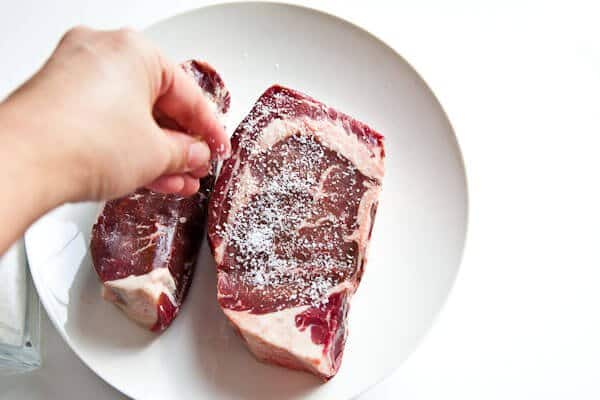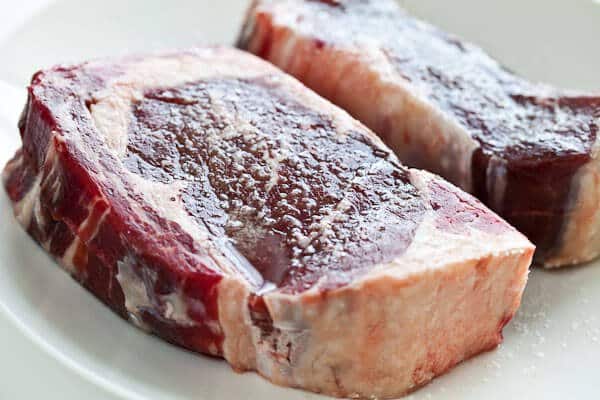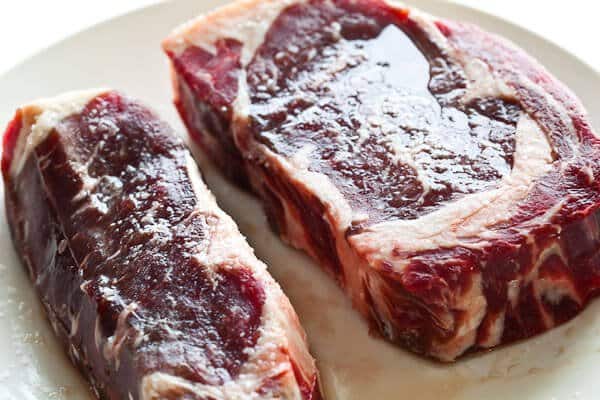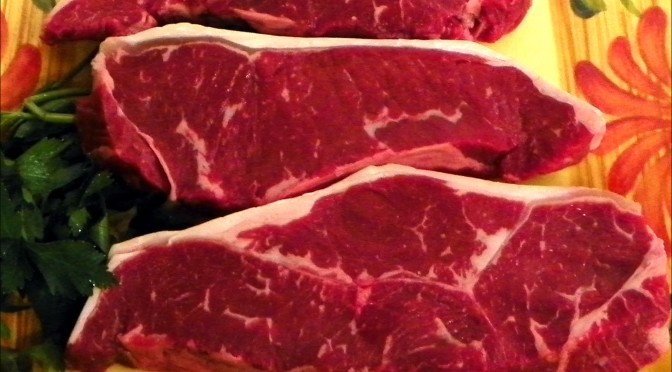Cooking the perfect Kansas City Grass Fed Steak
Updated: February, 6 2017 – If you are a steak-lover, you need to read though the entire article. I promise you that it’s worth it. Even if you don’t eat steak, this is a must-read…as you can impress your friends who think they cook the best steak.
Also please read our post on Cooking Grass Fed Beef.
The Steak Secret: salt your steaks 1 hour before cooking for every inch of thickness.
Season liberally with kosher salt on both sides with kosher, sea salt or better medium crystal Himalayan Salt. If you are used to using regular table salt, this may look like a ton of salt, but just remember that kosher and sea salt flakes are 2-3x the size of table salt.

And then just let it sit on your counter.
After 15 minutes, it will look like this — you can see how the meat’s water is starting to come up to the surface — and that some of the salt is still on the surface of the steak.

After almost an hour, lot’s of water accumulating:

The nxt step is to discard the water, rinse the steak really well to rid of all the salt. Pat very dry. Very very dry with clean paper towels so that absolutely no moisture is left on the steak.
How Salting Works
There are a couple types of protein that matter in the kitchen: collagen, myosin and actin. Collagen is the fibrous — and most abundant — protein found in animals. It connects and supports body tissues, including tendons and ligaments. Myosin and actin work together to help cells move — contracting muscles.
When you cook a steak and see the ‘grain’ in the meat, what you are looking at is caused by the gentle constriction of the collagen sheath that holds muscle fiber bundles together. The individual strands that make up the grain are muscle fiber bundles — inside that are smaller strands being held together by endomysium collagen.
Salting helps tenderise meat as this provides an acidic components in the samy way wine, vinegar, lemons or tomatoes, which breaks down the collagen.

